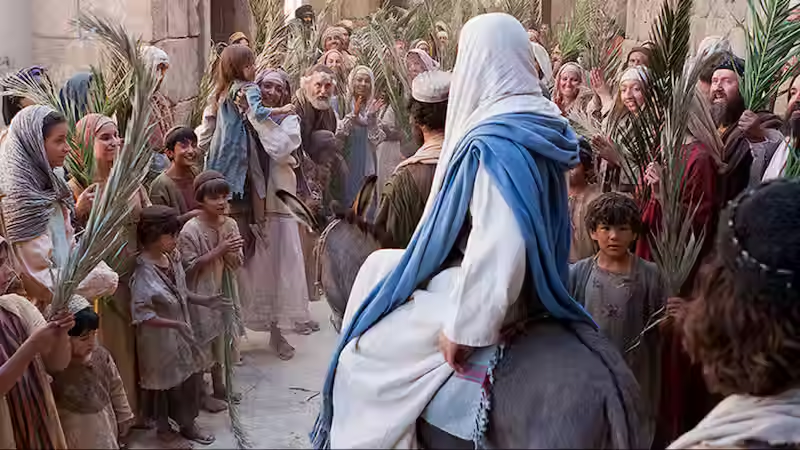Article 3: The Anti-Messiah's Betrayal of the Covenant and Desecration of the Third Temple
- carl1jimenez
- May 20
- 6 min read

Scripture warns of a time when the anti-messiah will break a covenant made with Yisrael, a betrayal that ends the sacrificial system and desecrates the Temple by his blasphemous actions. Many interpret this moment as the ultimate manifestation of apostasy, described as the “abomination of desolation.” Here, the anti-messiah will not only halt the worship of Yahweh but will claim divine status for himself, sitting in the place meant for Yahweh’s presence. This article will delve into the prophetic scriptural passages that foretell this event, exploring the significance of his betrayal, the desecration of the Temple, and its role in signaling the onset of the Great Tribulation.
1. Prophetic Background: The Abomination of Desolation
The “abomination of desolation” is a phrase found in Daniel’s prophecy and referenced by Yahshua in the Gospels. This term signifies a sacrilegious act that desecrates the holy place of the Temple, often understood as the point where the anti-messiah openly defies Yahweh.
Daniel 9:27: “And he shall confirm the covenant with many for one week: and in the midst of the week he shall cause the sacrifice and the oblation to cease, and for the overspreading of abominations he shall make it desolate…”
Matthew 24:15: Yahshua the Messiah also warns, “When you therefore shall see the abomination of desolation, spoken of by Daniel the prophet, stand in the holy place, (whoso readeth, let him understand)...”
These verses are foundational in understanding the anti-messiah's betrayal. The term “abomination” here specifically refers to something abhorrent to Yahweh, something that defiles and profanes the holy place. Scholars link this event to the point at which the anti-messiah claims divine authority, positioning himself in a place that symbolically and literally belongs to Yahweh alone.
2. Breaking of the Covenant and the Cessation of Sacrifices
According to Daniel, halfway through the 7-year period, the anti-messiah will violate his covenant with Yisrael by ceasing the sacrificial system in the Temple. This act of betrayal fulfills the prophecy in Daniel 9:27, signaling his true intentions.
Interpreting the Anti-Messiah’s Actions:
Cessation of Sacrifices: By stopping the sacrificial system, the anti-messiah not only defies Yahweh's ordinances but also undermines Yisrael’s covenantal worship, directly opposing Yahweh's laws and commands.
Breaking of the Covenant: This moment reveals the anti-messiah’s deception, where his initial promise of peace and religious freedom is shattered, exposing his agenda of control and blasphemy.
The stopping of sacrifices also marks the beginning of intensified tribulation, as Yisrael and those faithful to Yahweh will face persecution under the anti-messiah’s rule. This betrayal signifies a shift from deception to open hostility against Yahweh and His people, setting the stage for the final trials described in Revelation.
3. The Desecration of the Temple: Sitting as Elohim
The anti-messiah’s most audacious act of defiance is when he enters the Temple, claiming divine authority by positioning himself as Elohim. This desecration is not only a violation of the Temple’s sanctity but also a direct usurpation of Yahweh’s rightful place, fulfilling the warnings given in prophecy.
2 Thessalonians 2:3-4: Paul states, “Let no man deceive you by any means: for that day shall not come, except there come a falling away first, and that man of sin be revealed, the son of perdition; who opposes and exalts himself above all that is called Elohim, or that is worshipped; so that he as Elohim sits in the temple of Yahweh, shewing himself that he is Elohim.”
Interpretation of Key Terms:
“Man of sin” or “son of perdition”: This title reflects the anti-messiah’s complete rebellion against Yahweh, a figure of ultimate apostasy who embodies sin and lawlessness.
“Opposes and exalts himself”: His actions go beyond rejection of Yahweh; he positions himself as a divine figure to be worshiped, challenging the authority of Yahweh Himself.
“Sits in the temple of Yahweh”: The anti-messiah’s physical presence in the Temple signifies his claim over the sacred space, an act meant to mock and usurp Yahweh's role.
This act of sitting in the Temple is a powerful, symbolic gesture. Throughout Scripture, Yahweh’s presence has been associated with the Temple’s Most Holy Place, where His Spirit dwelt. The anti-messiah’s defiling presence here is an audacious attempt to replace Yahweh, asserting his own false divinity.
4. Yahshua’s Warning and the Call to Flee
In Matthew 24, Yahshua warns His followers of the coming desecration and instructs them to take action when they witness these signs. His warning is both a call to vigilance and a reminder of the severity of the events that are to unfold.
Matthew 24:15-16: “When you therefore shall see the abomination of desolation, spoken of by Daniel the prophet, stand in the holy place... Then let them which be in Judaea flee into the mountains…”
Yahshua’s words underscore the importance of recognizing the anti-messiah’s desecration as a pivotal sign of impending tribulation. His instruction to “flee” highlights the gravity of the situation, indicating that those who remain in the area will be in grave danger.
Significance of the Warning:
Recognition of Prophetic Signs: Yahshua’s warning emphasizes the need for discernment, to recognize the abomination of desolation and act accordingly.
Preparation for Persecution: Yahshua’s instruction to flee indicates that the period following the desecration will be marked by severe persecution, as the anti-messiah’s regime enforces compliance and punishes dissent.
5. The Great Tribulation: Intensified Persecution and Divine Judgment
With the anti-messiah’s desecration of the Temple, the prophecy transitions into what is often referred to as the Great Tribulation. This period, which lasts for three and a half years, is characterized by unprecedented persecution, suffering, and divine judgments upon the earth.
Revelation’s Depiction of the Great Tribulation:
Persecution of Yahweh’s People: Revelation describes a time when those who refuse to accept the mark of the anti-messiah face economic, social, and physical persecution, including imprisonment and death.
Divine Judgments: Yahweh’s response to the anti-messiah’s blasphemy and the world’s rebellion is a series of judgments, symbolized by the seven trumpets and seven bowls of wrath in Revelation. These judgments afflict the earth and its inhabitants, marking Yahweh’s retribution for the defiance of His commandments.
The Great Tribulation is, therefore, not only a time of human suffering but also a period when Yahweh’s righteous judgment is executed upon the anti-messiah and his followers. This time of intense trial and suffering fulfills the prophetic declarations of Daniel and Revelation, bringing about the ultimate redemption of Yahweh’s people and the restoration of His kingdom.
6. The End of the Anti-Messiah and Yahshua’s Return
Prophecy assures that despite the anti-messiah’s seeming power, his time is limited. The desecration of the Temple and persecution of Yahweh’s people will ultimately end with the return of Yahshua, who comes to defeat the anti-messiah and restore righteousness.
Revelation 19:11-20: Yahshua’s return is depicted as a triumphant victory over the anti-messiah and his followers, with Yahshua casting the anti-messiah and the false prophet into the lake of fire. This act not only brings an end to the anti-messiah’s reign but also signals the beginning of Yahweh’s eternal kingdom.
The Significance of Yahshua’s Return:
Vindication of Yahweh’s People: Yahshua’s return marks the deliverance of those who have remained faithful, vindicating their suffering and persecution.
Judgment upon the Anti-Messiah: The anti-messiah’s defeat affirms Yahweh’s sovereignty, bringing justice to those who have been deceived and oppressed by his regime.
The anti-messiah’s desecration of the Temple and declaration of divinity is a climactic moment in prophetic history. This act of defiance not only reveals his true nature but also sets in motion the final series of events leading to Yahshua’s return and Yahweh’s ultimate judgment upon the nations. For believers, this prophecy serves as a call to vigilance, faith, and endurance, with the assurance that Yahweh’s kingdom will ultimately prevail over the forces of deception and rebellion.
Stay Tuned for the Final Article – Article 4: The Final Events: What Follows the Anti-Messiah’s Desecration and the Great Tribulation
In the concluding article of this prophetic series, we will explore the ultimate fulfillment of Scripture following the anti-messiah’s desecration of the Temple and the onset of the Great Tribulation. What happens after the fury of persecution? How does Yahweh bring judgment upon the rebellious nations? What role does Yahshua the Messiah play in the final deliverance of Yahweh’s people? Article 4 will answer these questions by examining the events leading to the return of the true King, the establishment of His reign, and the restoration of righteousness upon the earth. The end is not despair—but triumph.
Prepare to witness prophecy come full circle.
By: Carlos Jimenez



Comments